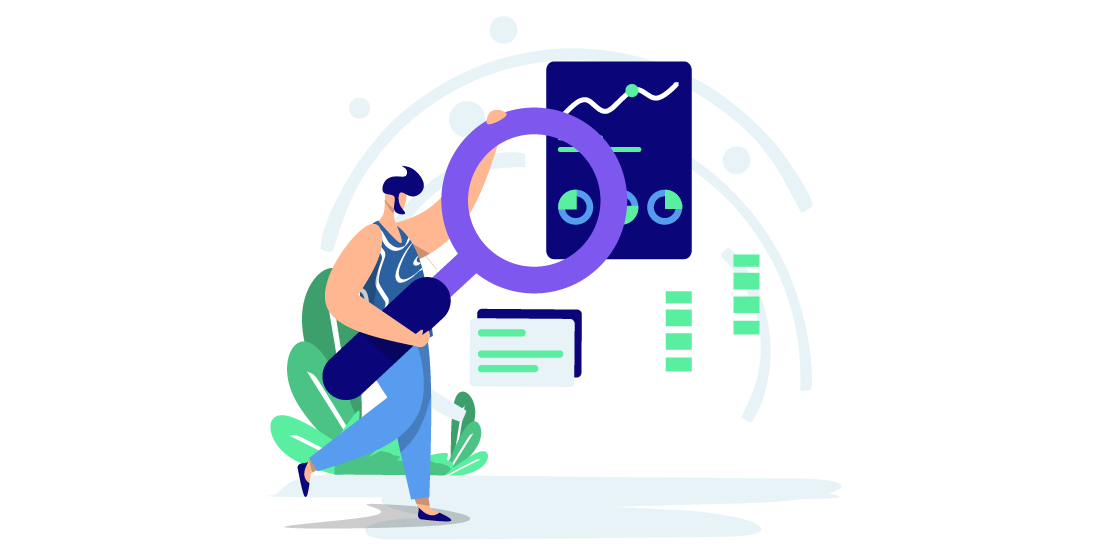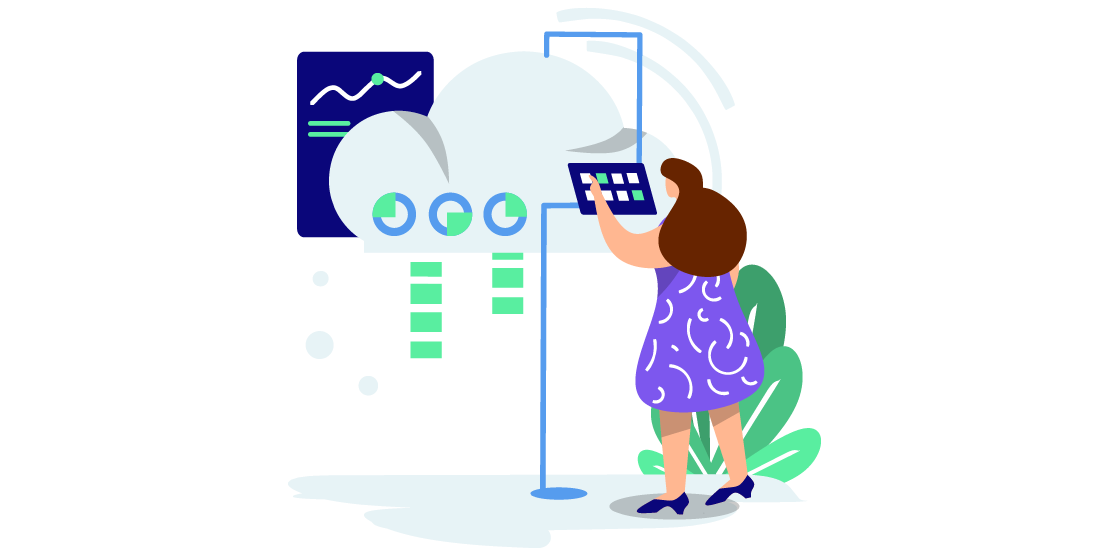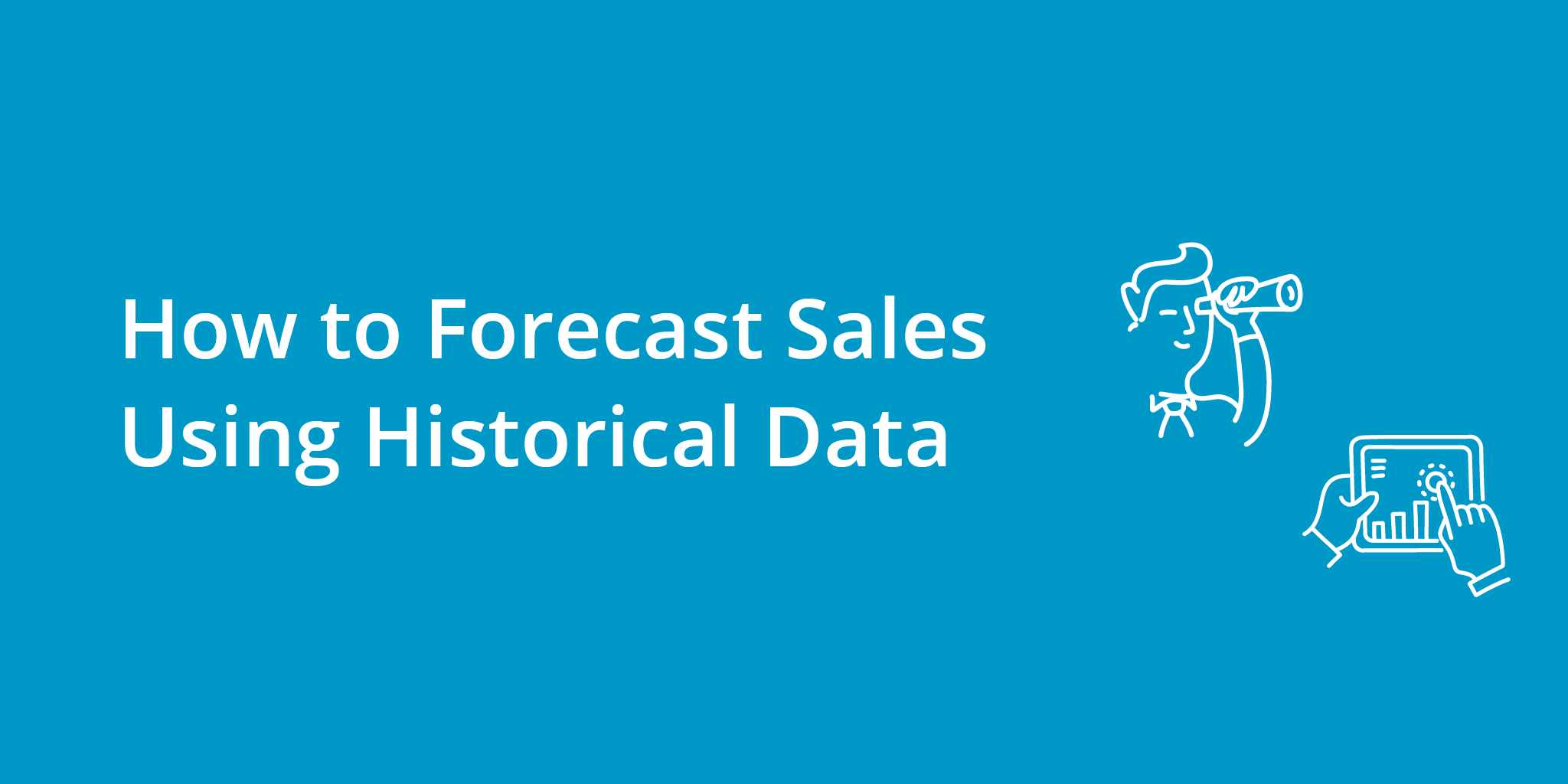Running a successful business is all about looking forward, whether that be finding ways to expand your customer base, creating new product lines, or estimating your potential future sales volume. By using historical data to predict future sales, you can get an idea of the direction your business is trending in and how much revenue you can expect in the coming months or years.
In this article, we’ll cover:
- What is Sales Forecasting?
- How to Forecast Sales Using Historical Data
- What is Historical Forecasting, and How Does it Work?
- Example Forecasting Method: Weighted Pipeline
- Using the Weighted Pipeline Method to Get Sales Estimates
- What is the Best Way to Analyze Historical Sales Data?
An accurate forecast can give your team a goal to strive towards, and help you determine how to correctly weigh your costs and revenue against your current business model. Keep reading to find out how you can forecast sales for your business.
What is Sales Forecasting?
A sales forecast is a way to estimate your expected sales revenue for a specific period of time, usually the fiscal quarter or year. A sales forecast should be as accurate as possible; unfortunately, 93% of sales leaders are unable to forecast revenue within 5% (source: Intangent).
Overestimating the total volume of your sales and missing your revenue target can cause dissatisfaction for not only your company, but your investors. The closer your estimates are to reality, the better; the only way to do that is by tracking and analyzing all available data.
To do this, you need to look at various aspects of your sales process, including:
- Individual Agent Performance
- Call Outcomes
- Estimated Time Saved
- Call Queue Time
- Rate of Change in Sales Over Time
- Close and Conversion Rates
The best way to factor in all of this information is by using every piece of accessible current and historical data during your analysis.

How to Forecast Sales Using Historical Data
There are many sales forecasting methods you can utilize in your quest to compile more accurate estimates; the best way to forecast sales will depend on your specific type of business, how much data you have access to, and what tools you have available to you. Historical forecasting in particular offers a number of benefits, as long as the services you use compile comprehensive data and give you ample access for the purposes of estimation.
What is Historical Forecasting, and How Does it Work?
Historical forecasting involves taking sales data from a specific time period and distilling it down into quantifiable revenue trends. This means looking at your growth between certain months, quarters, and years, and assuming those percentages will carry forward as you continue to grow your profit margins.
While there are many ways you can analyze historical data, we’ll break down one sales forecast example method that can yield in-depth estimates on each section of your sales pipeline.
Example Forecasting Method: Weighted Pipeline
With the weighted pipeline method of historical forecasting, you will use data related to previous performance to establish the probability of success within each section of your sales pipeline. By looking at how a customer moves through your pipeline, what level of interest they show at each stage, and the associated close rate, you can forecast how many sales you’ll make by volume in the future.
Let’s say that your pipeline involves six distinct stages; you can break down the likelihood of a sale based on what stage they are currently at. You then weight the final revenue based on that likelihood percentage.
Example Stages and Percentages:
Stage 1: Lead
The first step is to have a lead, which your sales rep will use to contact a potential client. If this lead is lost, your historical data will almost certainly show that the close rate for this stage is 0%.
Stage 2: Inquiry
The lead is contacted, but it isn’t determined whether they are interested or not. While the probability of closing at this stage is low, it’s still possible. We’ll put this at 5%.
Stage 3: Interest
The lead your rep has contacted is interested. This bumps up the probability quite a bit, but a sale is far from certain. We’ll estimate this close rate at 18%.
Stage 4: Demonstration and Proposal
If the customer is interested and a product demo is requested, your sales rates will jump dramatically. The percentage depends on whether this is an in-person demonstration, or a demo in the form of a free trial of your product. The proposed price of the product will also be put forth here, allowing the customer to see how much they will be paying. If someone is this far along, we can comfortably increase the potential close rate to 60%.
Stage 5: Bargain or Offer
Many companies will offer a discount or package deal to first time customers, which serves as an excellent tactic to cement a sale. If a customer has already seen the product in action as well as the price, and is then offered a more attractive pricing structure to sign on, you are well on your way to a confirmed close. We’ll put the success percentage at 85%.
Stage 6: Established Customer
If you are returning to a loyal customer with an offer to resubscribe or repurchase, your close rate will naturally be much higher. These are buyers who have already demonstrated they are willing to pay for your product, so we’ll put the close rate at 96%.

Using the Weighted Pipeline Method to Get Sales Estimates
By looking at the historical data for each stage, you can estimate your sales based on the number of customers who reach that stage and the price of your product. The formula that gives you your estimate will look like this:
Sales Forecast Formula
Potential Deal Value x Stage Close Rate = Forecasted Sale Amount
While your forecasts will involve hundreds or thousands of customers, let’s use a smaller example to illustrate how this would work. Say you had one customer who reached the “interest” stage for a product costing $2,000; because the close rate for that stage is 18%, you can estimate that the potential sale amount to be $360. If you had another customer in that same time period who reached the “demonstration” stage for that same product, your forecasted sale amount would be $1200. Added together, your projected sales for that time period would be $1560.
What is the Best Way to Analyze Historical Sales Data?
If you want to know how to forecast sales data for a new product, an old one, or an entire product line, you’ll need a way to accurately harvest and analyze all the available historical data.
A regularly updated CRM paired with Kixie’s reporting dashboard takes the guesswork out of tracking your team’s calling and texting performance, and offers live and historic activity reports in one centralized location. With Kixie’s reporting dashboard, you can:
- View agent-by-agent reports
- Sort sales outcomes by disposition
- View estimated time saved by each team and rep
- Get real-time snapshots of call queues
Not only that, but Kixie gives you access to the excellent integrated tools like:
By using an all-in-one service like Kixie, you can ensure that your year-over-year growth continually accelerates over time. We provide the tools to help your company reach their full potential, allowing you to optimize each step of your sales process.
If you sign up now, you can try Kixie for a week completely free, without even entering a credit card. If you want to have more accurate sales forecasts and start hitting those revenue targets, don’t wait; start your free trial today!



